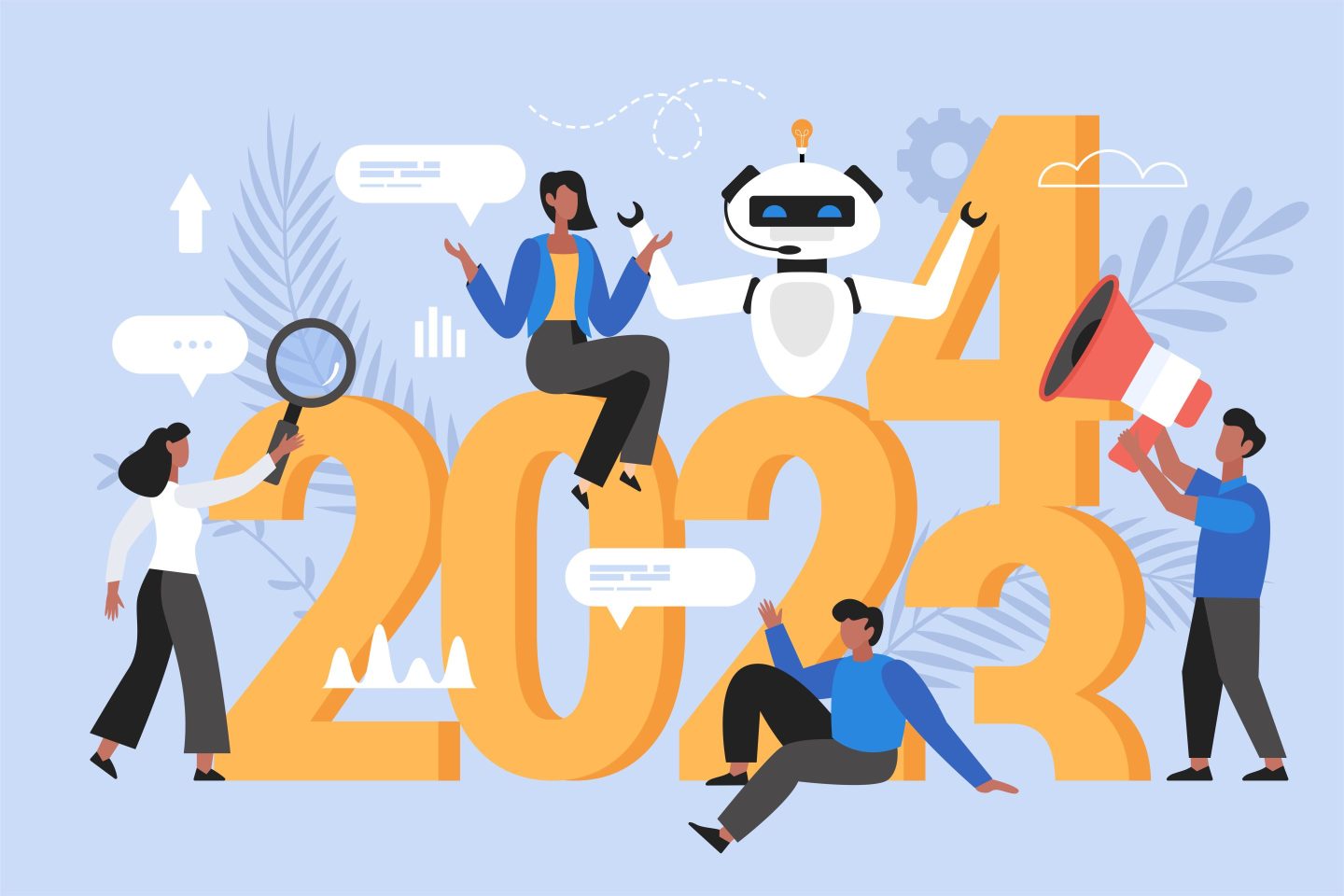Good morning!
With 2024 quickly approaching, HR teams are looking ahead and charting the course for AI’s potential next year.
Fortune spoke with several executives and talent strategy experts about what to expect in the new year. Below is some of the advice and insight they shared.
1. Investments and streamlining
For many HR executives, 2023 was an exploratory year for AI. But in 2024, HR leaders seem keen to invest further into AI.
“This year has been a year of announcements, excitement, innovation,” says Megan Smith, SAP’s head of human resources for North America. “Going into next year, it’ll be closer to proof of concept, looking at implementation, [and] bringing it to life.”
This implementation pairs with the financial pressures HR faces to determine where AI tools can automate tasks that improve the employee experience.
According to a recent Conference Board survey of 194 CHROs, 61% plan to invest in AI to streamline HR processes in 2024. Similarly, ServiceNow chief people officer Jacqui Canney’s team piloted an AI program that helped solve low-level tasks for them over a short period. Within three weeks, the AI tool helped improve productivity by 31%.
“My team could spend more time on something more complex, more personal, more human,” says Canney. “The more we keep going, the more productivity I’ll see because my team will become more comfortable with it.”
2. Attracting top talent
While job ads mentioning generative AI remain a sliver of all postings, the share still grew exponentially from the beginning of 2023 and likely will continue in 2024. Inevitably, companies will fight for this relevant skill set.
“There’s going to be an insatiable demand for AI talent over the next decade, and many talent leaders are trying to figure out how to build a brand [for] that audience,” says Dan Shapero, LinkedIn’s chief operating officer. Shapero advises customers to attract candidates by showcasing the talent they’d work alongside. “People are often asking themselves: Who do I want to work with? Not, who do I want to work for?”
3. Developing the workforce
“Companies are acknowledging that every job is going to be changed by AI, some more than others,” says Shapero. Companies should identify which tasks AI can help simplify or take over, thus bolstering employees’ willingness to embrace the technology.
“I encourage companies not to ask: “What’s my AI strategy?” Shift it to: What’s my AI win?” says Shapero. “If you can put one win on the board, you can start to learn what works, get comfortable, and bring your team along with you.”
4. Preparing for regulation
Companies must closely watch for new federal, state, or local laws and establish AI policies accordingly for employees. When establishing guidelines, HR teams should first determine what they don’t know.
“Because of the way AI is rolling out into U.S. workplaces, in an organic and unregulated fashion, what we’ve seen in our practice is that a lot of [clients] don’t know what they don’t know,” says Adam Forman, a labor and employment attorney at law firm Epstein Becker and Green. “They’re shocked to find out that the business unit has implemented this tool, and it has implications from a work perspective that they don’t even think about.”
Forman advises HR or legal teams to conduct an AI audit to identify what AI tools employees use in the workplace and whether there are processes to ensure that these tools comply with any rules or regulations the company has to follow. He also recommends organizations approach vendors with prepared questions, such as whether the vendor will indemnify the organization if sued for using the tool, where the vendor stores its data, and whether it performs data bias audits.
Paige McGlauflin
paige.mcglauflin@fortune.com
@paidion
Reporter's Notebook
The most compelling data, quotes, and insights from the field.
The U.S. weekly unemployment claims fell by 19,000 to 202,000 for the week ending Dec. 9, well below analysts’ expectations of around 224,000.
Around the Table
A round-up of the most important HR headlines.
- Cruise, the self-driving taxi business majority owned by GM, is cutting almost one-fourth of its workforce two months after operations were shut down by a pedestrian accident. Reuters
- The CEO of insurance tycoon Aviva told British lawmakers on Wednesday that misogyny is particularly oppressive for young women in the finance sector. Bloomberg
- Many migrant children coming to America through the southern border find themselves doing life-threatening roofing and construction work. New York Times
Watercooler
Everything you need to know from Fortune.
Golden years. There are significantly more workers 65 and older than there were 35 years ago, and their wage growth has increased faster than younger workers'. —Alicia Adamczyk
Zoned out. Employees are showing up to the office but not fully engaged while there. It’s a $1.6 trillion productivity problem. —Jane Thier
Side-gigging. Thanks to Gen Z and millennials, 64 million Americans freelanced this year. That’s almost 40% of the country’s workforce. —Chloe Berger
This is the web version of CHRO Daily, a newsletter focusing on helping HR executives navigate the needs of the workplace. Sign up to get it delivered free to your inbox.













